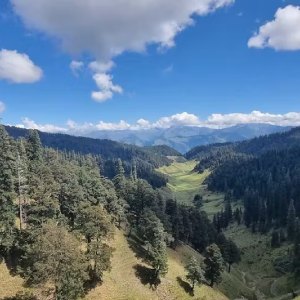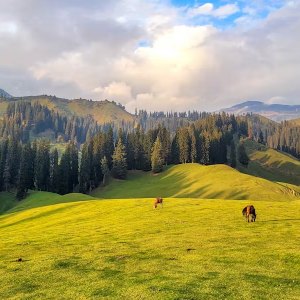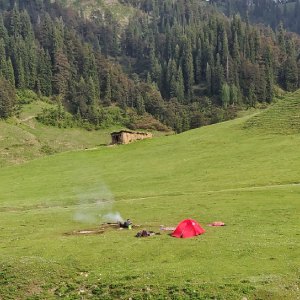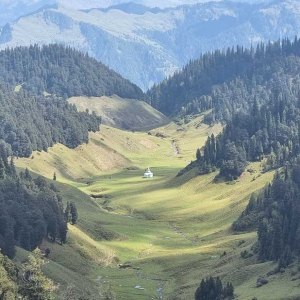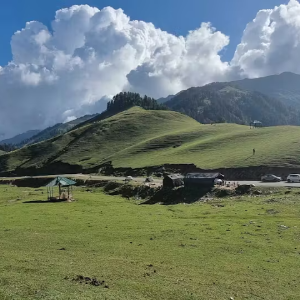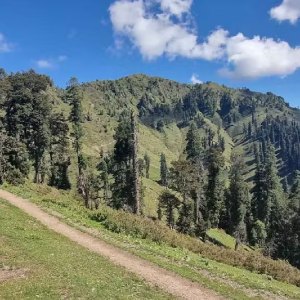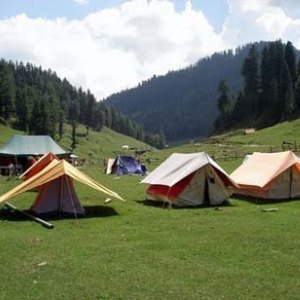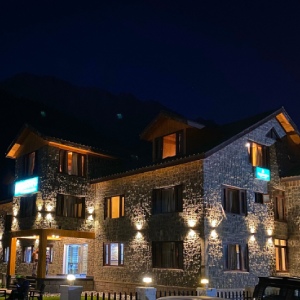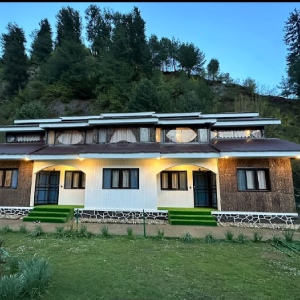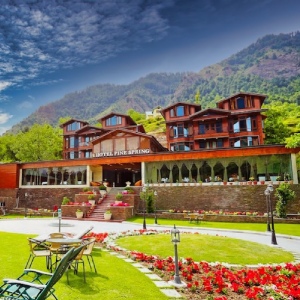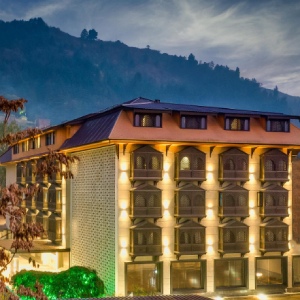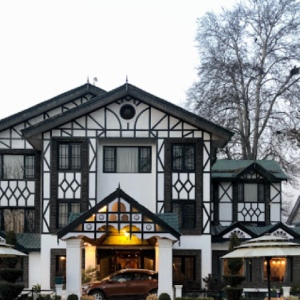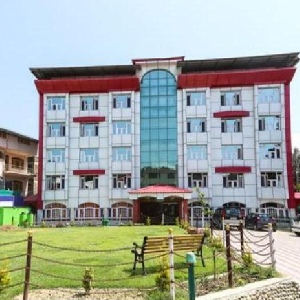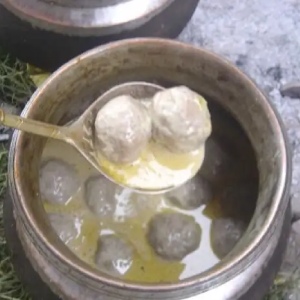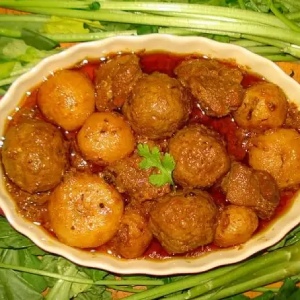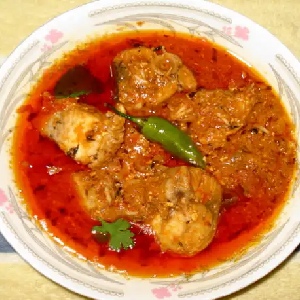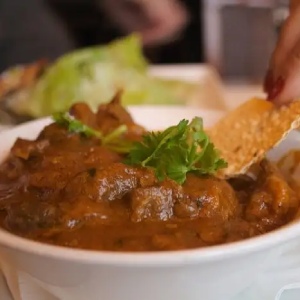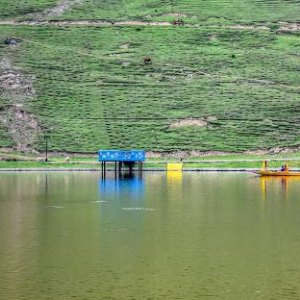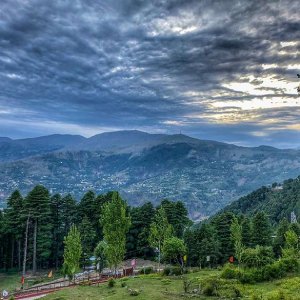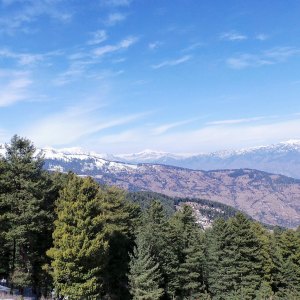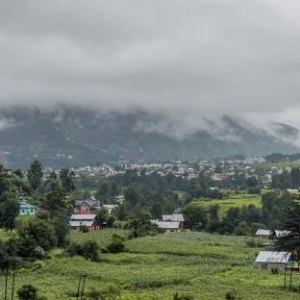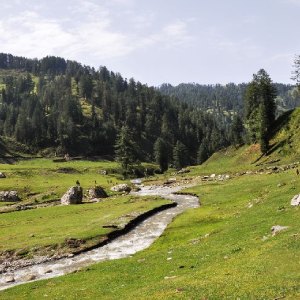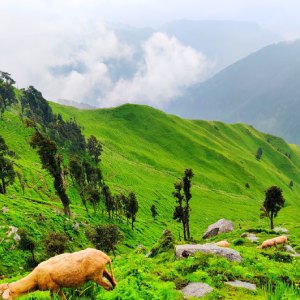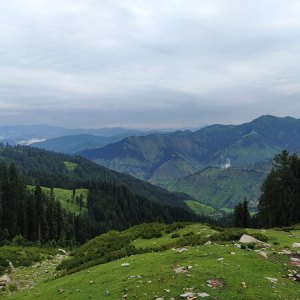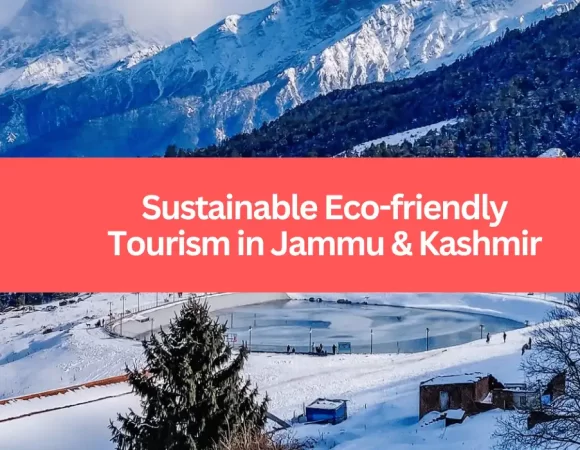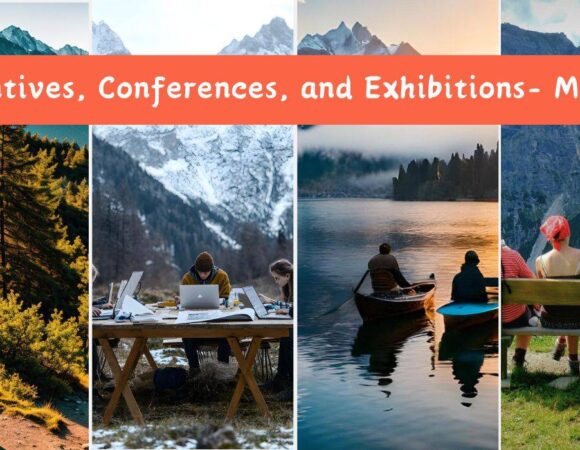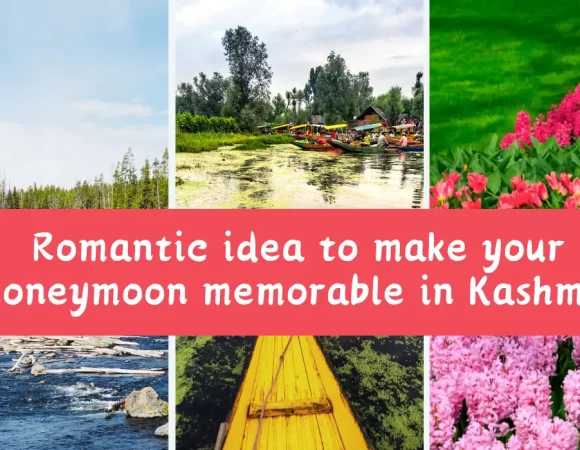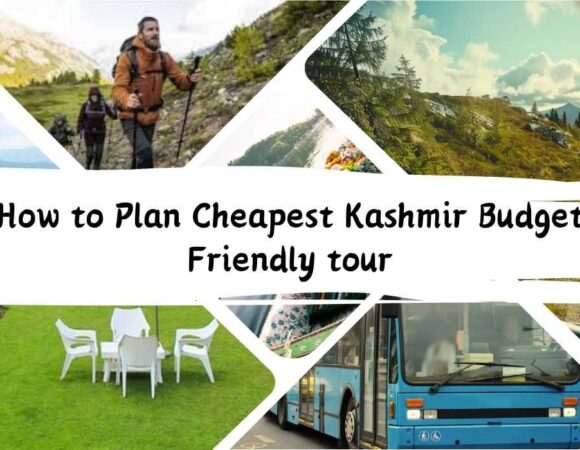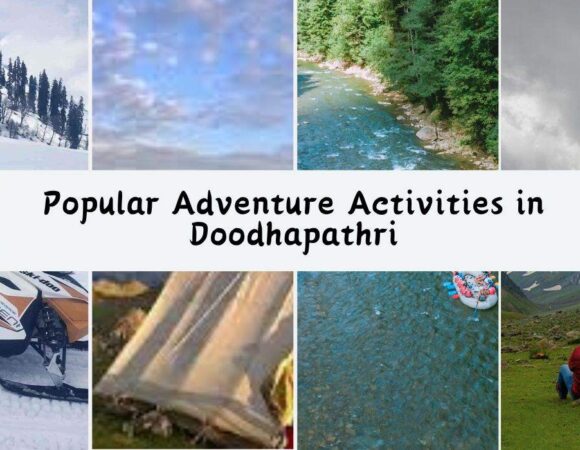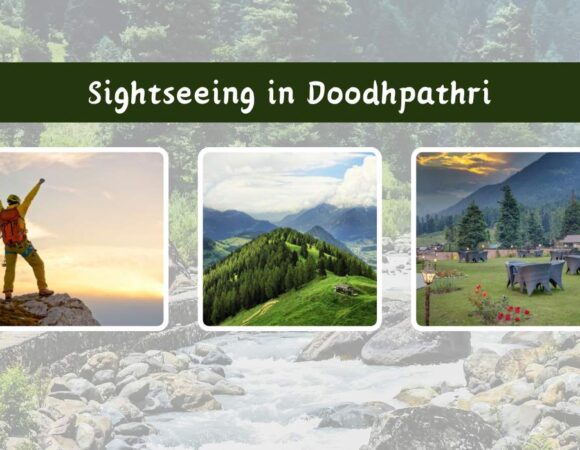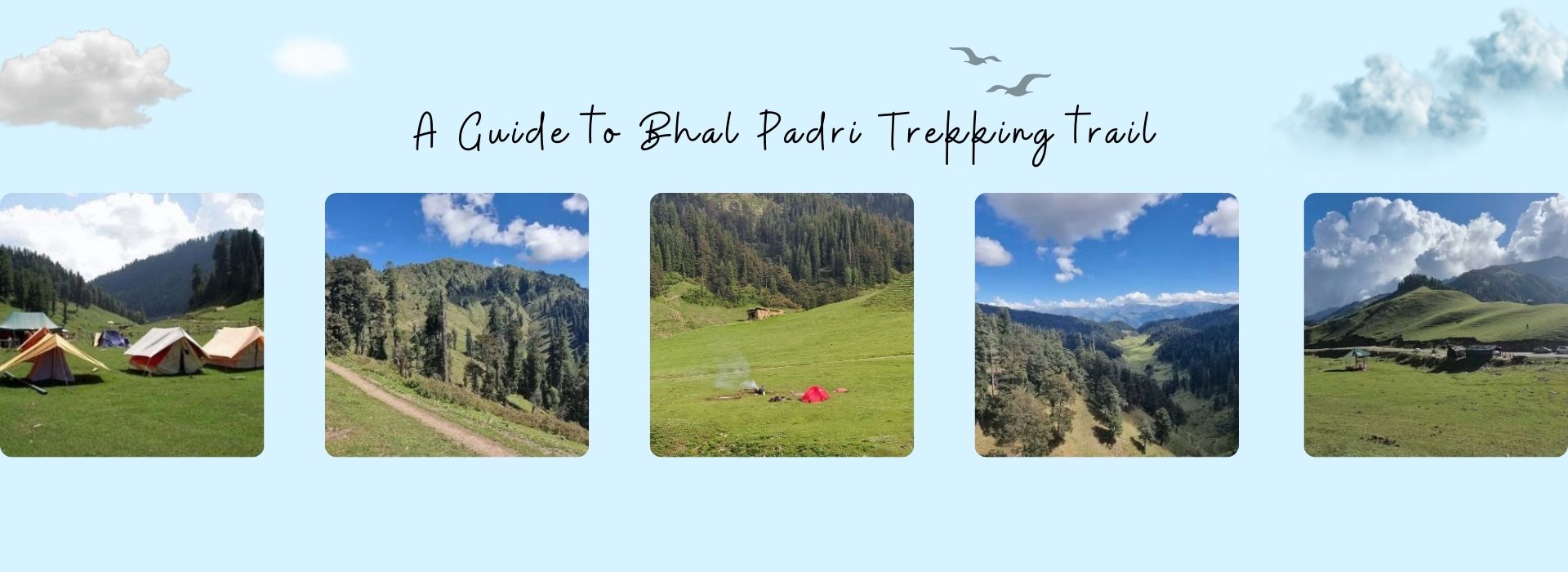
A Guide to Bhal Padri Trekking trail
Journey to Bhal Padri
Reaching Bhal Padri is an adventure in itself. Located 66 kilometers from the district headquarters of Doda, it lacks direct major road connections but can be accessed via nearby routes. Travelers start their journey from Jammu, the nearest airport and provincial headquarters, proceeding to Batote via NH1A and continuing to Thathri via NH244. After crossing the Thathri-Kishtwar Bridge, they turn onto the Thathri-Khilotran Highway. From Gandoh Bhalessa, a footpath leads to Bhal Padri, requiring a final 10–15 kilometer walk from the Bhaderwah-Chamba road or a 12-kilometer trek from the Gandoh-Khilotran road. This journey immerses visitors in the region’s pristine beauty, making the destination even more rewarding.
The Nature of Bhal Padri
Bhal Padri derives its name from the region of Bhalessa and the nearby Padri Pass, the highest point on the Bhaderwah-Chamba road. The village, primarily inhabited by the Gujjar community, exudes cultural richness with traditional mud houses and a reliance on solar-powered lights due to the absence of electricity. This blend of cultural heritage and natural beauty creates a unique and immersive experience for visitors.Best time to trek on Bhal Padri
The summer and early fall months, from May to September, are the ideal times to trek on Bhal Padri. The region’s natural beauty is at its height during this time, and the weather is pleasant. This is why the timing is perfect:
1. Pleasant Climate
Trekking is best done in the summer when the weather is pleasant and mild. With daytime highs of 15 to 25 degrees Celsius, hiking is enjoyable without the intense heat of the plains.2. Flora in Bloom
Bhal Padri’s surrounding meadows and forests are at their most beautiful in late spring and early summer. Trekking is made more enjoyable by the diverse range of wildflowers, verdant surroundings, and colorful flora that you can see.3. Unobstructed Pathways
During these months, the snow-free trekking trails improve accessibility and safety for hikers. Additionally, the weather is stable in early autumn, which lowers the possibility of storms or unexpected rain.4. Extended Days
Extended trekking periods are made possible by the longer daylight hours in the summer and early autumn, which gives you more time to explore and take in Bhal Padri’s scenic beauty without feeling pressed for time.5. Observations of Wildlife
There is a greater chance of seeing local wildlife because of the pleasant weather. In their natural habitat, you might come across a range of bird species, small mammals, and maybe even some larger animals.Avoid Winter Months
It is not advisable to go trekking in the winter (November to February) because of the risk of avalanches, severe weather, and abundant snowfall. During this time, the trails are frequently inaccessible and can be dangerous.Explore here : Top Sightseeing Spots of Pahalgam for Photographers
Doda
Bhal Padri trail

Bhal Padri Attractions
Expanding the Beauty of Bhal Padri

The charm of Bhal Padri extends beyond its immediate surroundings to nearby lush areas like Jawali, Mandral, and Ghati. These regions offer mesmerizing views and additional attractions for tourists, providing opportunities for nature walks, photography, and tranquility. The unique traditions and customs of local communities in villages such as Bonincha, Kakoti, Kota, and Gingota further enrich the experience. Collaboration between the Tourism Development Authority and these communities could preserve and promote local culture, organizing cultural festivals and activities to give visitors a glimpse into their traditions and historical roots. Bhal Padri, with its untouched landscapes and rich cultural heritage, holds immense potential as a tourism hub in the Bhalessa region. With proper recognition and development initiatives, it can emerge as a leading destination for eco-tourism and adventure travel in India. Establishing a Tourism Development Authority, investing in infrastructure, and promoting cultural preservation can attract more tourists, benefit the local economy, and provide unforgettable experiences. It is time to shine a spotlight on Bhal Padri and unlock its true potential, sharing its unparalleled beauty with the world.
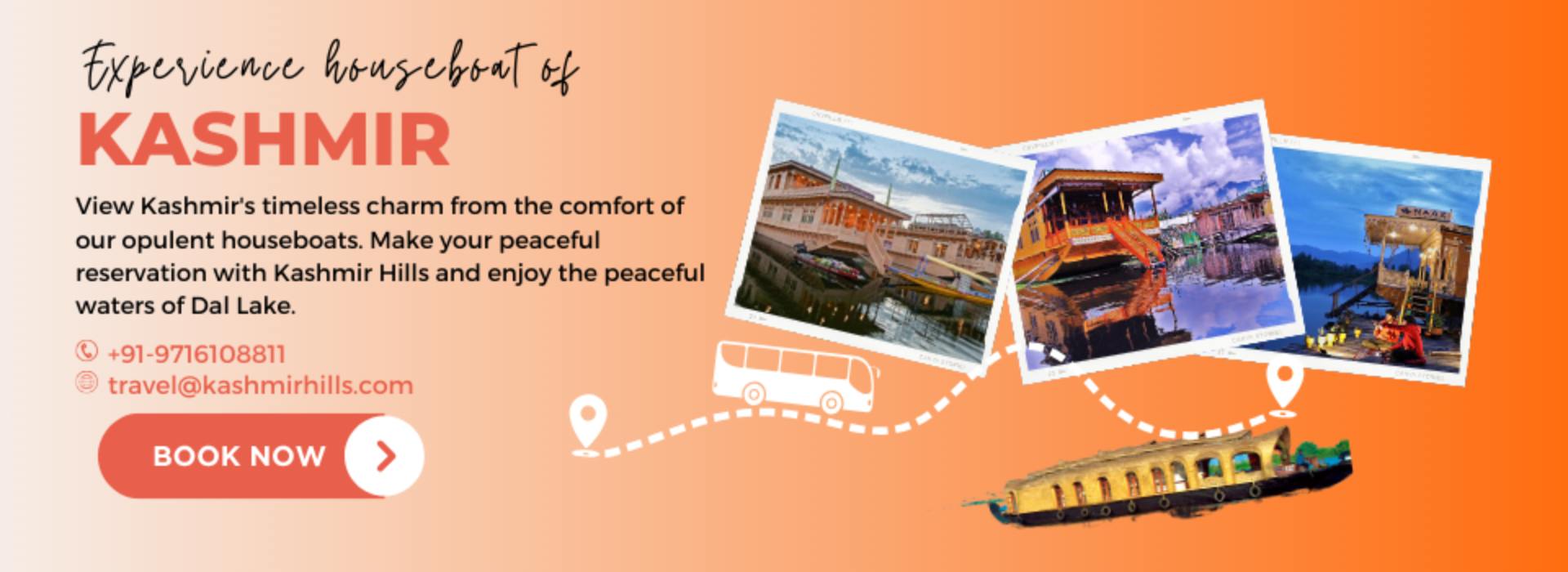
Trekking to Bhal Padri : A Detailed Itinerary
(For Indians Trackers)
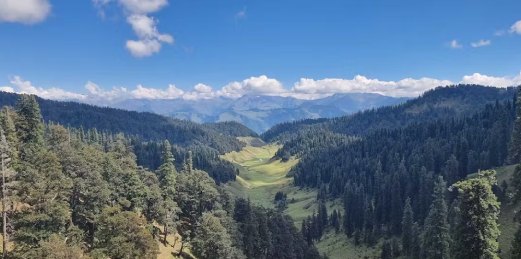
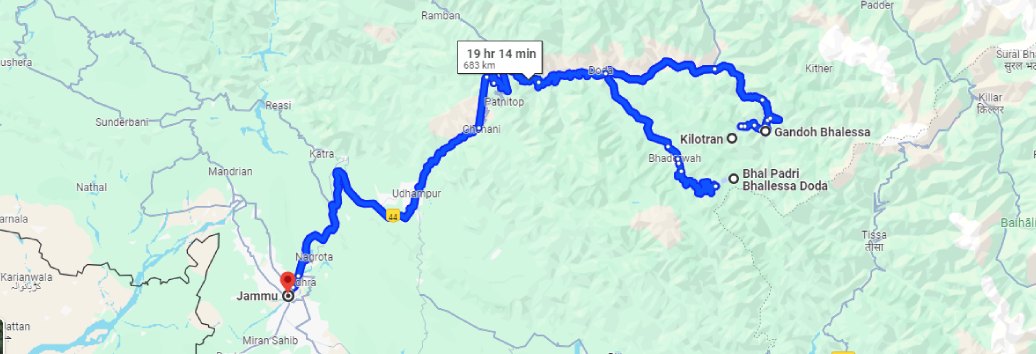
Day 1: Arrival in Jammu
– Arrive in Jammu, the nearest airport and provincial headquarters.
– Overnight stay in Jammu.
Day 2: Jammu to Bhalessa
– Continue from Jammu to Bhalessa via NH244.
– Cross the Thathri-Kishtwar Bridge and turn onto the Thathri-Khilotran road.
– Overnight stay in Dak Bsnglows located in Bhalessa Khilotran to Bhal Padri**
– Begin the trek from Khilotran to Bhal Padri.
– Trek through lush forests and meadows, enjoying the pristine beauty of the region.
– Set up camp and enjoy the serene surroundings.
– Overnight stay in tents at Bhal Padri.
Day 3: Exploring Bhal Padri
– Spend the day exploring Bhal Padri.
– Enjoy trekking, nature walks, and photography.
– Immerse in the local culture and interact with the Gujjar community.
– Overnight stay in tents at Bhal Padri.
Day 4: Bhal Padri to Khilotran
– Trek back from Bhal Padri to Khilotran.
– Reflect on the adventure and scenic beauty experienced during the trek.
– Overnight stay in Khilotran
Day 5: Khilotran to Jammu
– Travel back from Khilotran to Jammu.
– Enjoy the journey and the changing landscapes.
– Overnight stay in Jammu.
Day 6: Departure from Jammu
– Depart from Jammu, carrying unforgettable memories of Padri.
Untapped Potential and Needed Developments
Despite its breathtaking scenery and potential as a tourist hotspot, Bhal Padri has been largely overlooked by the Department of Tourism. The lack of infrastructure and recognition has hindered its growth. However, its challenging terrain and trails continue to attract adventure enthusiasts. Establishing a Tourism Development Authority and investing in tourism infrastructure could transform Bhal Padri into a sought-after destination, enhancing the visitor experience and boosting the local economy.Difficulty in Bhal Padri Trek :
Relatively unknown but potentially challenging due to its terrain and conditions is the Bhal Padri trek, which is situated in Jammu and Kashmir’s Doda district. The distance covered on the trek varies from 15 to 20 kilometers, depending on the exact path chosen. The following are the possible challenges you might run into, along with the locations where you might run into them more frequently:Potential Difficulties and Critical Points
Altitude SicknessCritical Point:
- Higher sections (above 3,000 meters)
- Steep and Rocky Terrain
- Unpredictable Weather
- Physical Exhaustion
- Long stretches without rest points, middle to end of trek
- Forested sections and open meadows
- Remote sections far from villages or settlements
- Dense forest areas and near water sources Injuries
- Rocky paths and areas with loose gravel Remote Location
- Isolated stretches far from road access
Preparation Tips: Before Start trekking
- Physical Fitness: Ensure good conditioning
- Proper Gear: Sturdy boots, weather-appropriate clothing
- Navigation Tools: Map, compass, or GPS
- Supplies: Sufficient food, water, and medical supplies
- Guide: Hiring a local guide is recommended
FAQs
Thus, the following advice should be kept in mind when you travel from Jammu to Bhaderwah:
- – If you plan to spend the night in Srinagar, stay in the tourist districts.
- – Dress and act in a way that blends in with the group. Steer clear of downtown areas.During unrest, stay in tourist areas as they are usually safer and better guarded.
- – If there is a curfew, don’t freak out. Stay composed and give it time to pass.
Once you’re in Jammu, you can take a taxi or a state transportation bus to Bhaderwah. Another option is to go from Jammu to Udhampur by train, then from Udhampur to Bhaderwah by taxi.
Enquire about the details when you are booking for a cab.
